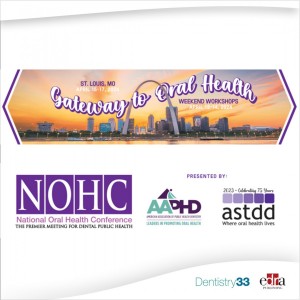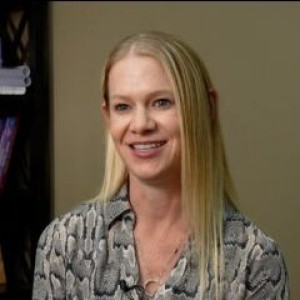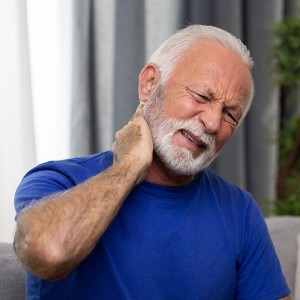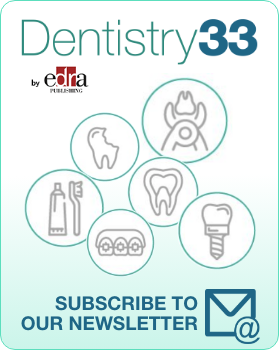
3D Face Scanning, a new application for dentistry. How clinicians and patients can benefit from this technology
Interview with Eric Zarakov
Eric Zarakov, SVP of Sales & Marketing
Holds two US & two International Patents - 27 years of experience in Digital Photography - Past Companies: Apple, Foveon, Tessera
1) How did Bellus3D evolve and adapt to keep serving its client during the pandemic?
2021 it has been quite challenging. As you know, at Bellus3D, we focus on 3D face scanning, and we've been specialized in this area for the last five years focusing on providing the capability to capture the human face in 3D. Our technology can scan the face with consumer-level hardware in remarkable detail and with very high precision. As the pandemic arrived and evolved, it was affecting everybody across the world, including us. Out of necessity, we developed a new product leveraging our expertise: the Bellus3D Mask Fitter. The Mask Fitter is a frame that goes around the contour of the nose and the face to press against a standard surgical or cloth mask to seal the mask's perimeter against the face to make it more effective. It was born out of an idea that our founder had. He got frustrated with his glasses getting steamed up due to air gaps between his face and the masks he was wearing. He realized that this was a common problem and saw an opportunity. The Mask Fitter improves the peripheral seal of surgical, KN95, or other masks offering higher filtration. Anyone can scan their face for free using the Bellus3D Face App or Dental Pro app for Apple iPhones or iPads with FaceID capability and generate the Mask Fitter frame data file, which can then be printed home 3D printer or sent to be printed by third parties. The CDC recommends Mask Fitters to prevent getting and spreading COVID-19, and the NIH has listed the Bellus3D Mask Fitter as appropriate for clinical use. It was very gratifying to work with the Loma Linda University School of Dentistry on refining the development and testing of the Mask Fitter as they confirmed that it enhances the peripheral seal of a face mask.
2) Technology in dentistry is becoming more and more fundamental every day. Based on your expertise, what are the benefits of introducing a Face 3D scan for a dental clinic?
This is a fascinating question for me and Bellus 3D because our company doesn't come from the dental industry, so we have the opportunity to look at the needs of dentists and dental clinics from a different perspective and point of view. In dentistry, there is a separation between what happens in the clinic and what happens in the dental lab; for the most part … concerning 3D workflows … the dentists collect the 3D data. The design aspect of the restoration happens in the lab, but amazingly this is typically done without the context of the face. I mean, how do you design a smile without a face? A smile without a face is just a set of teeth. Smiles imply the context of a face, and doing smile design in the absence of the face doesn't quite make sense, especially now when you can have the face in 3D. The use of a 3D face in design logically makes sense because you want to look at the teeth in the context of a 3D face from different viewing angles. People aren't always looking at you as a person straight on. They look at you from the side and different angles. And so, contextual design is a vital part of the attraction of using the Bellus 3D face scanning. In the context of that, as an overall visualization tool, it's also a significant benefit for patient motivation. During a visit, the doctor can show the patient smile simulations from different perspectives and motivate them to move forward in treatment planning and acceptance. In other words, the 3D face scanning can provide a new level of visualization for patient motivation. It provides a tool for the labs to have a contextual design leading to better and more efficient work and reduced rework.
3) Technique versus technology, which is the relationship today? And, is it always the clinician's knowledge that determines the success of the application?
As a technologist, I have been around different levels of changes in the number of different industries that have converted from traditional practices to using digital technologies. From that history, my answer sticks towards the importance of technique for success. Technology is just a bunch of tools and, by themselves, really has no meaning. They need the expertise of dentists, clinicians, and labs to be really successful in their application. The industry has many new tools and technology that are developing and evolving within many different parts of the workflow spectrum of dentistry. Still, it is the experience and knowledge that allows you to use those technologies to be able to do the job, and it's that knowledge that will always have a more substantial influence on the work.
4) What will be the next revolutions brought by digital technologies in Dentistry?
I will switch the context of the question a little bit because I think that the industry is flooded with technology right now. That's not the problem. There's lots of technology out there. There are technologies involved in scanning and milling for doing restorations. There are technologies for computer-aided design. There are technologies for intraoral scanning. There are technologies for doing 3D face scanning. It's breathtaking the rate of change occurring in this industry.
The next revolution in dentistry is not so much about the next point technology because new technologies are always being developed and added to the collection of available technologies. The REAL revolution is about the industry-wide acceptance and use of the current technologies as a matter of everyday practice. That's the challenge. In general, practitioners – both dentists and labs are reluctant to change. They will delay the change until they lose business to others that offer better products or others that are more efficient. And that is where education comes into play. It’s the industry's responsibility to teach and educate Dentists, Lab Technicians, and Patients on adopting, using and implementing current technologies to provide a better service and care to the final patient.
The revolution is going to be the adoption of the technology that exists today.
5) Finally, a personal question. Among your professional goals achieved, which ones do you remember most proudly?
That's not a fair question; it's like saying which of your children do you like the best?
I've been fortunate, and I've had a lot of fun parts of my career. I worked at Apple for 13 years. I contributed to the earliest innovations in digital photography. I lived in Central America, where I worked on an African palm oil plantation before joining the Bellus3D. If I was forced to pick, I am most proud of one of the first projects I led at Apple because it was the first time I led a product team. The QuickTime VR technology was very compelling and had real meaning; it was a time when I started to understand the difference between leading and managing and realizing that you can lead and shape a project without being the smartest person in the room; it's about creating safety within a team and allowing the best ideas to really come to life. It was about putting your ego aside and understanding that the team will lead if you guide it without necessarily being the prototypical commanding leader, but rather more of a shepherd. So the combination of the managerial experience and the enjoyable technology was really remarkable.
During this project, I collaborated with Eric Chen, who happens to be the CEO and founder of my current company, Bellus3D. About five years ago, I got in touch with him, and he had started this company doing 3D face scanning. While Dentistry was not the focus, the dental industry pulled us out of the desire to complete the virtual dental patient. Today, this is a technology that will change how dentistry is advanced and practiced. I’m really proud of the revolution that we are bringing into the market.
6) Last extra question, what would be the new products and services offered by Bellus3D in 2021?
Two specific product capabilities were introducing this year. First, we have just added the ability to place 3D condyle points on the 3D scanned face as reference markers for placing the 3D face and 3D jaw files onto a virtual articulator in dental planning software. This integration has clinical relevance making the use of virtual articulators patient-specific in terms of occlusal simulations. In about a month or two, you're going to see some announcements that will show how this capability is being integrated into dental planning in ways not possible before. We are very, very excited about some of these upcoming announcements.
The second area we're excited about is introducing our Dental Pro Web product, a web application for use by dentists and labs to align dental and jaw scans with the 3D face models. The capture of 3D data like jaw, teeth, and face scanning typically happens in the clinic while the design work happens in the lab. With Dental Pro Web, you can scan in the clinic, shared the 3D face scan with the lab, and then those 3D face scan files are immediately available on a web browser aligning with the upper and lower jaw files and aligning them, aligning the 3D smile design guides. You can then export the aligned 3D face from the web browser with the lab on a PC, making it more accessible for the lab to incorporate the 3D face scans in dental planning software. These are just some of the latest products we offer, with much more that will come during the year.
 Related articles
Related articles
Digital Dentistry 04 March 2024
Comparative analysis of accuracy in digital and conventional implant impressions: an in vitro study
Intraoral scanners (IOSs) have revolutionized contemporary restorative and prosthetic workflows.
Periodontal disease is a chronic inflammatory disease that affects the periodontium and is classified into gingivitis and periodontitis with reversible and irreversible tissue damage.
Digital Dentistry 14 December 2023
Digital vs conventional impressions in edentulous patients: a systematic review
As people’s age increases, the rehabilitation of completely edentulous patients using conventional complete dentures has become widespread.
Digital Dentistry 29 November 2023
Oral cancer (OC) is one of the most common forms of head and neck cancer and continues to have the lowest survival rates worldwide, despite advances in research and therapy. The prognosis of OC has...
Intra-oral scanners (IOS) continue to gain popularity in the dental field, replacing traditional impression taking and related technology. Although there are numerous studies in the literature...
 Read more
Read more
USA 15 April 2024 - 17 April 2024
April 15-17, St. Louis, Missouri
The National Oral Health Conference is the premier meeting for those interested in continuing education and networking opportunities within the discipline of dental public health.
A new NIDCR grant will give Assistant Professor Dechen Lin the opportunity to test diet and medication’s efficacy on head and neck cancer.
CORDENTAL Group announced its exclusive partnership with Overjet: the world leader in dental AI.
Residents in Texas can experience affordable and integrated healthcare services all in one convenient location with the opening of new Walmart Health centers















